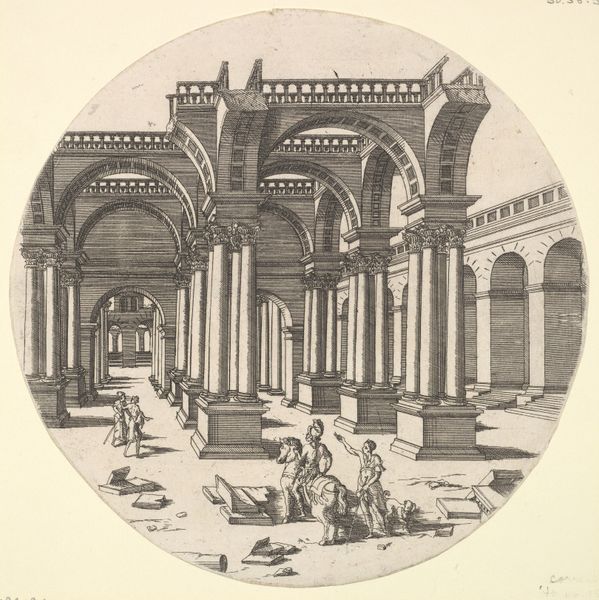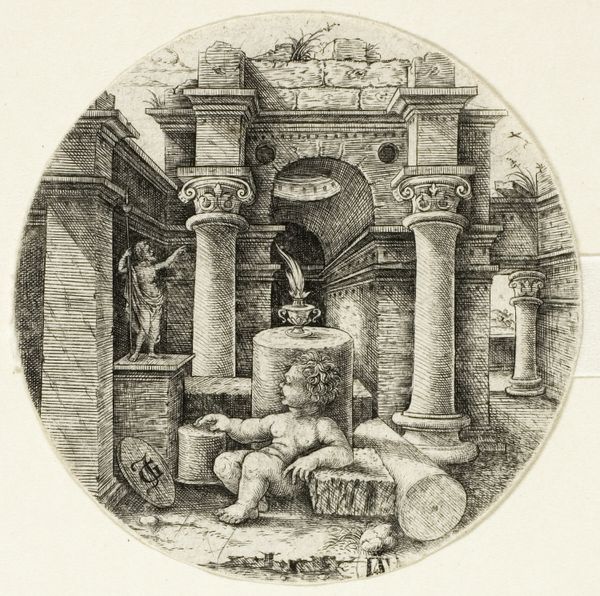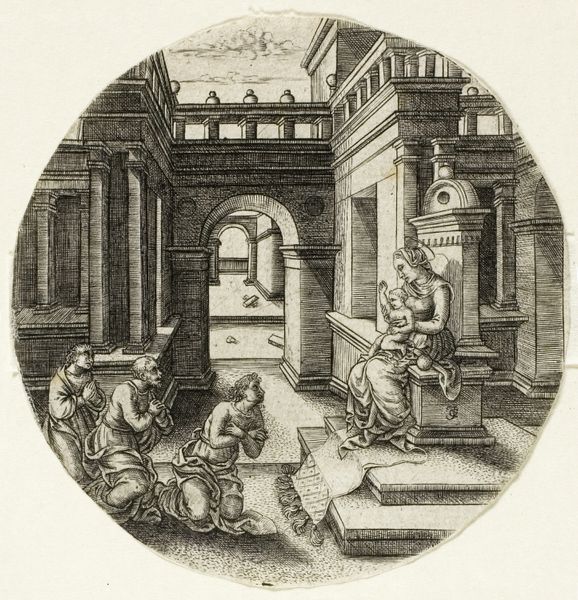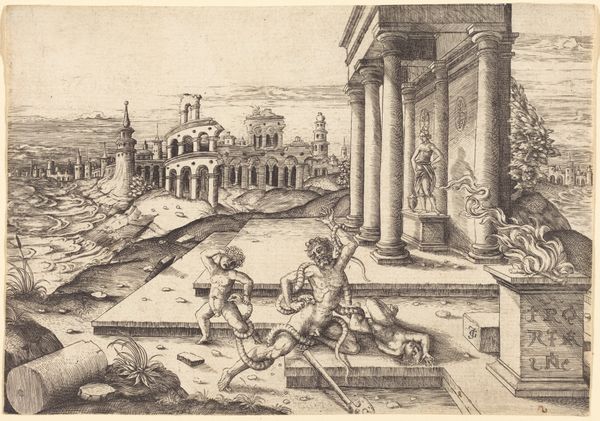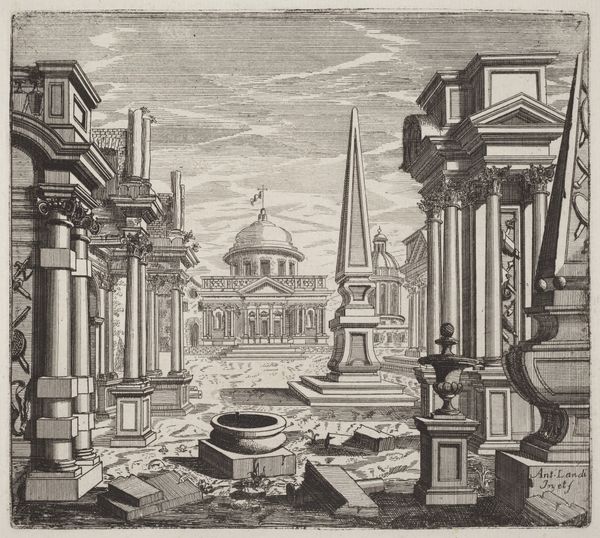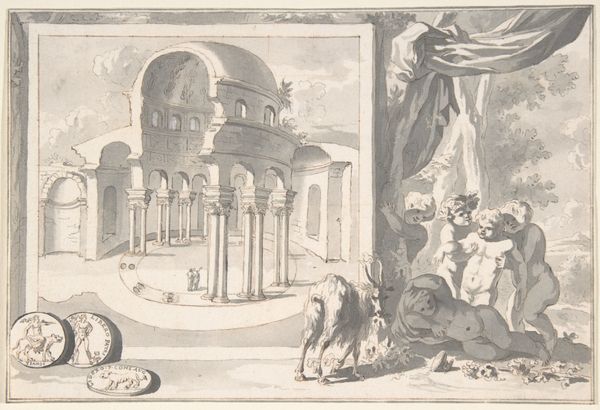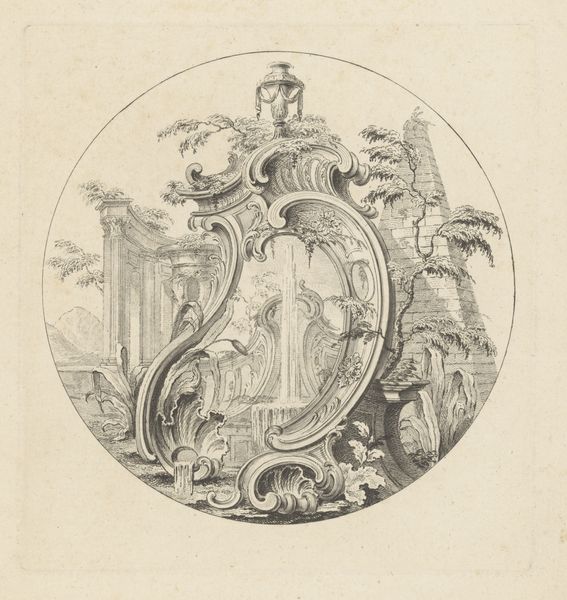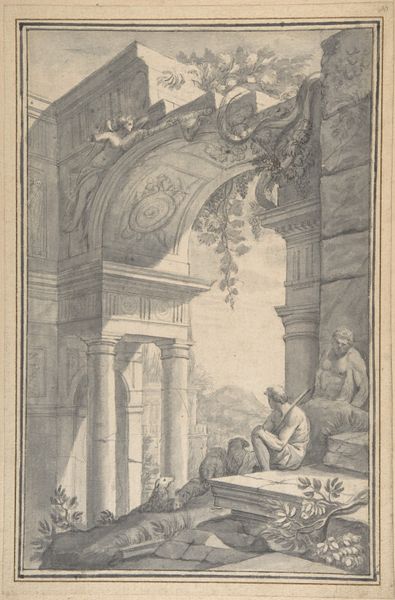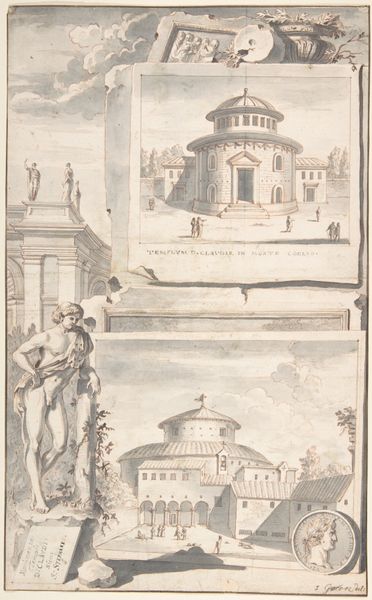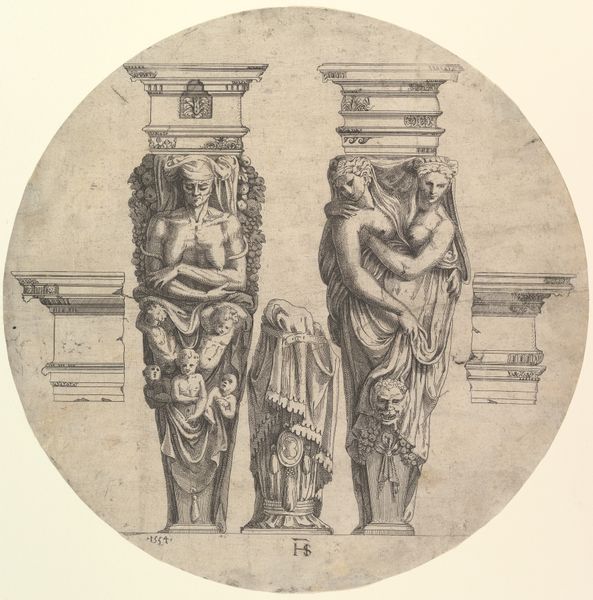
drawing, print, bronze, engraving, architecture
#
drawing
# print
#
old engraving style
#
landscape
#
classical-realism
#
bronze
#
figuration
#
form
#
column
#
line
#
italian-renaissance
#
engraving
#
architecture
Dimensions: sheet: 6 1/2 x 6 1/2 in. (16.5 x 16.5 cm) plate: 5 7/16 x 5 7/16 in. (13.8 x 13.8 cm)
Copyright: Public Domain
Curator: Jean de Gourmont's engraving, "L'Enfant dans la Galerie," created sometime between 1506 and 1526, offers us a glimpse into the architectural fantasies of the Italian Renaissance. Editor: My first impression is of precise lines creating an almost dizzying depth of space. The child in the foreground, rendered in a somewhat classical style, provides a stark contrast to the architectural rendering surrounding him. It feels oddly unsettling. Curator: It’s an intriguing piece in its demonstration of perspective. We see Gourmont playing with scale and proportion, typical of the era’s exploration of humanist ideals within the visual arts. The placement of the child does certainly contribute to that sensation, doesn't it? It encourages a kind of comparative assessment on the viewer's behalf. Editor: Absolutely. The choice of engraving, of course, is crucial here. Think of the laborious process, the craftsman meticulously carving into the metal plate to produce these clean, uniform lines. How many prints were made, and what did this accessibility of imagery do for architectural aesthetics at the time? Curator: It’s precisely that sort of dissemination that gives such works importance! Prints like these circulated ideas widely, impacting architectural trends, artistic styles, and ultimately the collective visual culture of the period and even those to come. These kinds of architectural prints reflect back to antique examples of structure and order. Editor: I wonder about the child as a representation of labor, though. Juxtaposed against broken pieces of architectural structure. Is the print suggesting anything about what becomes of childhood in times where construction and artistic innovation meet destructive consequences? Curator: It's a fascinating perspective. Perhaps Gourmont aimed to explore the transient nature of even the most monumental achievements against the backdrop of individual, or even societal, development. Editor: This definitely opens the door for reinterpreting Renaissance prints and ideas. What do we keep? What must be altered? Curator: I couldn’t agree more. It pushes us to reconsider the very legacy of the era.
Comments
No comments
Be the first to comment and join the conversation on the ultimate creative platform.
